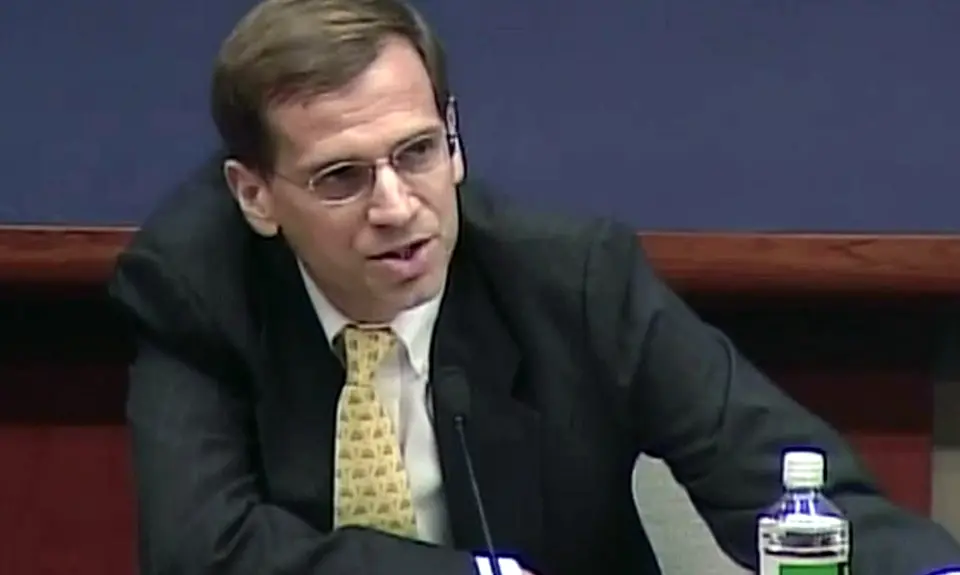“Confirmed Judges, Confirmed Fears” is a blog series documenting the harmful impact of President Trump’s judges on Americans’ rights and liberties. Cases in the series can be found by issue and by judge at this link.
Trump D.C. Circuit judge Greg Katsas tried to keep a man in prison and reject his motion to vacate his sentence that was handed down almost 50 years ago, even though the government has recently admitted that the evidence used against him was scientifically faulty and that the prosecutor knew or should have known that at the time of trial. The court majority rejected Katsas’ dissent and ruled that the motion to vacate should be granted in its April 2020 decision in United States v. Butler.
In 1971, D.C. prosecutors charged Dennis Butler with Jesse Mears’ murder. The prosecution’s lead witnesses were a couple that Butler knew, James Hill and Phyllis Robinson, who claimed that Butler told them details of the murder. There were serious problems with these witnesses’ credibility, however, including changes in Robinson’s story about whether she had heard directly from Butler or through Hill, and significant contradictions about their drug use, both before and after the murder. In addition, fingerprint evidence showed that none of the “sixteen fingerprint impressions recovered from the crime scene” belonged to Butler.
The prosecution responded by introducing corroborating evidence, including detailed testimony from an FBI forensics expert about hair samples found on the victim’s clothing. The expert testified about a “direct microscopic comparison test” he performed between those hairs and Butler’s hairs, including a comparison involving “sixteen features,” and concluded that the hairs were “the same” and “alike in all identifiable microscopic characteristics.” The prosecutor repeated that phrase in his closing argument. Butler was convicted and sentenced to 20 years to life in prison.
Years after the Butler trial, however, multiple studies proved that “science had not validated [the] foundational premises” of the hair microscopy used by the FBI during Butler’s trial, and studies “failed to support” its accurate use for identification purposes. Despite knowing of these problems, prosecutors “continued to rely on hair evidence in trial” before 2000.
After DNA testing “exonerated several men” who had been convicted using such evidence, some of whom “had been imprisoned for decades,” the FBI decided to perform the “largest postconviction review in history” and identified numerous pre-2000 cases in which the government used “false hair evidence” to help obtain convictions. Butler was one of those cases. In 2015, the government stated that if Butler brought a motion for post-conviction relief based on the use of false hair evidence, it would waive any statute of limitations or other procedural defenses so that his claims could be resolved on the merits.
Butler filed such a motion in 2016. It was rejected by a lower court that believed that the false hair evidence was not “material” since there was other evidence, notably the Hill and Robinson testimonies, supporting the conviction. On appeal, Judge Katsas wrote a dissent agreeing with that view, claiming that the clearly false testimony took “only twelve lines of text” in the original trial transcript and that the non-hair evidence was “overwhelming.”
In an opinion by Chief Judge Sri Srinivasan, the D.C. Circuit rejected that view and reversed the lower court. Contrary to Katsas’ assertion that the majority opinion was “out of step” with precedent, Srinivasan explained that the majority ruling was “fully in step” with precedent from the Supreme Court and the D.C. Circuit. That precedent made clear, Srinivasan stated, that the government’s use of testimony it knew or should have known was false is considered “material” if the evidence “could in any reasonable likelihood have influenced the jury” – a standard that the courts have ruled is “quite easily satisfied” in light of the strong interest in combating the “corruption of the truth-seeking function” of trials through false testimony.
In fact, the majority went on, the court had ruled unanimously in another case in 2019 that very similar use of false hair testimony was material, even though the number of lines of false testimony was similarly small and there was much other evidence that could have warranted the jury’s verdict. And the majority also noted than in its decision 47 years ago affirming Butler’s conviction, the D.C. Circuit itself found that the Hill and Robinson testimony posed a serious “danger of unreliability,” and it relied heavily on the “corroborating evidence” in sustaining Butler’s conviction, including the “especially weighty” hair testimony.
In short, the majority concluded, the “easily satisfied” standard was clearly met here, and the government’s use of evidence against Butler that it knew or should have known was false “denied him a fair trial.” But if it had been up to Katsas, Dennis Butler would have been required to remain in prison despite his wrongful conviction almost 50 years ago.
